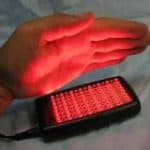Last Updated on 12 months by Francis
Pulsed Electromagnetic Field (PEMF) therapy is a non-invasive, drug-free, and effective treatment method used to alleviate pain, reduce inflammation, and improve overall health. But, the question is, does PEMF therapy actually work? In this discussion, we’ll explore the evidence supporting the effectiveness of PEMF therapy and examine its potential benefits for various health conditions.
Contents
Understanding PEMF Therapy
PEMF (Pulsed Electromagnetic Field) therapy is a form of alternative medicine that has been gaining popularity in recent years. It involves the use of low-frequency electromagnetic waves to stimulate the body’s cells and promote healing. Proponents of PEMF therapy claim that it can help with a wide range of conditions, including chronic pain, inflammation, and even depression.
How PEMF Therapy Works
PEMF therapy works by exposing the body to low-frequency electromagnetic waves. These waves penetrate the body’s tissues, stimulating the cells and tissues and promoting healing. The waves are delivered through a device that emits pulses of electromagnetic energy. The frequency and intensity of these pulses can be adjusted to target specific areas of the body and conditions.
The Science Behind PEMF Therapy
The scientific understanding of PEMF therapy is still in its early stages. However, research has shown that it can have a positive impact on the body’s cells and tissues. PEMF therapy has been shown to increase blood flow, reduce inflammation, and even stimulate the growth of new cells.
The Benefits of PEMF Therapy
PEMF therapy is a non-invasive, drug-free therapy that has been shown to have a wide range of benefits. Some of the most commonly reported benefits include:
Pain Relief
PEMF therapy has been shown to be effective in reducing chronic pain. It works by reducing inflammation and increasing blood flow to the affected area. This can help to reduce pain and promote healing.
Improved Sleep
PEMF therapy has been shown to be effective in improving sleep quality. It works by stimulating the body’s natural sleep cycles and promoting relaxation. This can help to improve the quality of sleep and reduce the symptoms of sleep disorders.
Increased Energy
PEMF therapy has been shown to be effective in increasing energy levels. It works by stimulating the cells and tissues in the body, promoting the production of ATP (energy). This can help to improve overall energy levels and reduce fatigue.
Improved Mood
PEMF therapy has been shown to be effective in improving mood. It works by stimulating the production of neurotransmitters in the brain, such as serotonin and dopamine. This can help to reduce the symptoms of depression and anxiety.
The Limitations of PEMF Therapy
While PEMF therapy has been shown to have many benefits, it is not a cure-all for all conditions. It is important to keep in mind that PEMF therapy is not a replacement for traditional medical treatments. It is also important to note that PEMF therapy may not be effective for everyone.
Lack of Regulation
One of the biggest limitations of PEMF therapy is the lack of regulation in the industry. There are many different products and devices on the market, and not all of them are created equal. It is important to do your research and choose a reputable device from a trusted manufacturer.
Limited Research
While there have been many studies on PEMF therapy, the scientific understanding of how it works is still in its early stages. More research is needed to fully understand the potential benefits and limitations of PEMF therapy.
FAQs about PEMF Therapy
What is PEMF therapy?
PEMF therapy is a non-invasive and painless method for treating various ailments by changing the electromagnetic energy within cells. PEMF stands for “pulsed electromagnetic field” therapy, and it uses low-intensity electromagnetic waves to stimulate and heal damaged or injured tissue.
How does PEMF therapy work?
PEMF therapy works by sending low-frequency magnetic waves through the body, which stimulate cells and tissues at the cellular level. This stimulation improves circulation, enhances cellular metabolism, and increases the production of ATP (adenosine triphosphate), which is the primary energy source for cells.
What conditions can PEMF therapy treat?
PEMF therapy has been known to treat a wide range of conditions such as arthritis, depression, chronic pain, sleep disorders, and even cancer. It is also used for overall wellness and to boost the immune system.
Is PEMF therapy safe?
Yes, PEMF therapy is safe when administered correctly by a trained professional. It is non-invasive and does not produce side effects like many conventional treatments. However, people with certain conditions such as pregnancy, epilepsy, or pacemakers should not use PEMF therapy.
Is PEMF therapy effective?
There is growing evidence that PEMF therapy can be effective in treating various conditions. Studies have shown it to be effective in reducing pain, inflammation, and swelling. However, more research is needed to determine the full effectiveness of PEMF therapy for a range of ailments.
How long does PEMF therapy take to work?
The amount of time it takes for PEMF therapy to work depends on the individual and the condition being treated. Some people may feel immediate relief after just one treatment, while others may require several sessions to see improvement. It is best to work with a trained professional who can personalize a treatment plan based on your specific needs.







